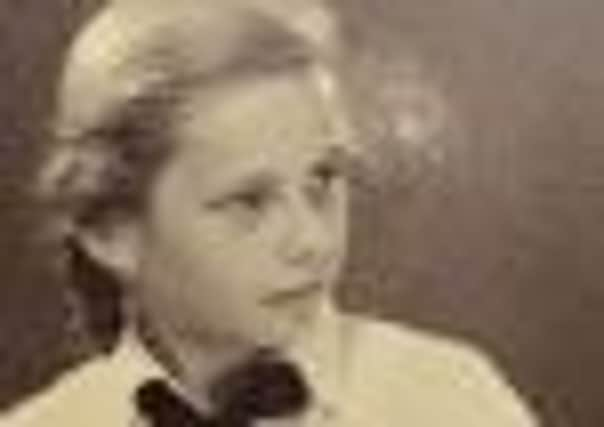A picture of youthful innocence in shadow of Nazi evil


Edeltraut Schmidt had been writing to Kathleen Beaumont, of Larch Road, Huddersfield, since November 1938, and her cheerful correspondence is full of inconsequential news and youthful excitement.
Written in a neat, joined-up hand, the letters tell of brothers and sisters, the family’s Airedale Terrier, and the Christmas presents, including a teddy bear called Peter, that young Edeltraut received in December 1938.
Advertisement
Hide AdAdvertisement
Hide AdPerfectly preserved on blue notepaper, the words bear no hint of the international enmity that was to follow, but the shadow of Hitler’s Nazi movement is still cast across the innocent face captured in a photograph shared by the girls.
In the black and white image, Edeltraut is shown wearing the uniform of the Bund Deutscher Madel (BDM), which was the girl’s wing of the Nazi party’s youth movement, more often referred to as the Hitler Youth.
One of the letters, written in January 1939, detail some of the activities the German schoolgirl and her sisters take part in while at meetings, including gymnastics, playing in the forest and board games.
While nothing is known of what happened to the girls, either during or after the war, the three letters from Nietleben, now part of Halle in eastern Germany, reveal a fascinating and poignant relationship.
Advertisement
Hide AdAdvertisement
Hide AdThey are included in a collection, also made up of the photograph and two postcards, which are owned by Shaun Hudson, who runs a house clearance business in Sheffield and deals in antiques.
He recently sold letters written by a German boy to a penpal in Leeds in which they discussed the 1936 Berlin Olympics and Hitler Youth but said he was amazed to discover the BDM link in the girls’ correspondence.
“The last letter we have is from August 20, 1939, which meant it was being written just a few days before war was declared on Germany by Neville Chamberlain,” he said.
“But it seems like it was a really blossoming friendship and it is just such a shame when you think about what was to happen between the two countries and how the contact would have been cut off by that.
Advertisement
Hide AdAdvertisement
Hide Ad“You just can’t help wondering what happened to Edeltraut Schmidt and Kathleen Beaumont – whether they survived the war and whether they ever managed to get back in touch with each other in the years that followed.”
In the letter written in August 1939, Edeltraut makes no mention of the war which threatened to engulf the world and instead regales her friend with stories of her summer holidays and return to school.
Writing in German, she says: “Many thanks for your card and the lovely book on Wales. We now have only 10 days before school. We have spent lovely days as Ostseestrande, in the region of Zingst [on the Baltic coast].
“It is a nature reserve. There are elk and bison. We have been there before. Before you enter the nature reserve one is faced with a large gate. Next to it is a warning sign saying it must be kept closed or you will face severe punishment. We did not see elk or bison but there were lots of blueberries.”
Advertisement
Hide AdAdvertisement
Hide AdOne of the postcards included in the collection shows a sunset at one of the Baltic resorts visited by the family, while another shows the bison the schoolgirl writes excitedly about.
In one of her other letters, written earlier, Edeltraut tries out her English on her penpal Kathleen and asks her to correct any mistakes she has made when she writes back. She signs off: “Many greetings from your German girlfriend Edeltraut Schmidt.”
The only clues about Kathleen Beaumont are contained in a letter written in January 1939, in which the German girl translates her English counterpart’s words into German.
The message, translated back to English, reads: “On December 20, I will be 13. I am an only child and go to Royds Hall School. I am in the second year.”
Advertisement
Hide AdAdvertisement
Hide AdMr Hudson said: “I am interested in collecting militaria and particularly things that relate to the German side in the Second World War.
“I think that, over the years, people have been taught to forget that many of the Germans caught up in the conflict were really just ordinary people living their lives.In many cases, German children were encouraged to write to English children and there was a tradition of friendship between the two countries until the outbreak of the war.
“The other collection of penpal letters I had earlier this year included an invitation from the German family to the boy from Leeds to visit them, and for him to attend the Olympics in Berlin with them. “I just don’t think that at the time anybody on either side believed it would come to such a terrible conflict and I think these letters reflect the hope people had that they could be friendly with each other.”
Mr Hudson is now selling the collection of Edeltraut Schmidt’s letters, which can be seen at the Antiques Centre, at Elsecar Heritage Centre near Barnsley. For more details call 01226 744425